Chameleon People - [16]
The deceased’s suitcase was in a corner of the room, but only contained two extra sets of clothes, a pair of shoes and three women’s magazines. There was a glass, a toothbrush and a tube of toothpaste in the bathroom, as well as a dressing gown, two used towels from the hotel, and some make-up. It appeared that nothing had been stolen from the room, and Eva’s purse with almost one hundred kroner in cash was still in her coat pocket. The only thing one might expect to find in the room that was not there was the key. The police report confirmed, without any further speculation, that it had been found on the floor outside Room 114.
None of the deceased’s friends said they had heard anything from her room or any of the other rooms in the few hours before she was found dead. The only exception was that Solveig Thaulow said she heard a muffled bang or thump at around half past seven. However, she was not able to say where it came from or what kind of noise it could have been. The deceased’s boyfriend suspected that she might have been strangled or suffocated, possibly with the help of a pillow. However, there were no marks on her neck and there was no saliva or other bodily fluid on any pillow.
The assumed cause of death was given in the end as ‘epileptic fit’. There was a short statement to say that, according to the deceased’s sister and parents, she suffered from epilepsy, and from the doctor’s initial findings, it seemed that she had had an epileptic fit that afternoon. Her sister Oda Bjølhaugen was very shaken and immediately demanded an autopsy. But when their parents arrived later that night, they asked if it would be possible not to have an autopsy, as it would only cause more distress for the family in a situation where everything indicated natural causes. Their daughter had ‘very reluctantly’ agreed to this in the end, and the police had done as the family requested. Thus there was no confirmation of the time and cause of death.
The group had visited the capital out of season. There were a total of eighteen rooms in the hotel, over two floors, and all the other rooms had been empty that night. The receptionist had been alone on duty that evening, and had seen no one other than the six guests. The window in the room was closed from the inside and the door was locked. I could understand perfectly well why this had been deemed to be a natural death, the strange detail of the key aside.
I called Ane Line Fredriksen in again. It did not take her long as she was standing waiting impatiently no more than a few feet from my door.
‘Is there anything new about the lack of an autopsy?’ she asked, before I managed to get a word out.
I replied that there had been no autopsy at the request of Eva’s parents, even though her mother had very clearly wanted one. Ane Line Fredriksen said that she thought it was odd, and I said I agreed. Then I quickly moved on to the names of the other members of the party.
She shook her red mane when I said Solveig Thaulow, and then again when I said Hauk Rebne Westgaard. However, she gave a firm nod when I said Kjell Arne Ramdal.
‘I’ve never heard the first two names, but I have heard Kjell Arne Ramdal mentioned a few times. Father almost never spoke about business at home, but judging by some of the telephone messages I overheard, I think Kjell Arne Ramdal was some kind of business associate. When I was a teenager and later, I always wondered what he looked like, as it was not often that I heard the names of any of Father’s business contacts. In fact, I would be very grateful if you could tell me a bit about my father’s life outside the family home at some point after the investigation. I never really knew him other than as a father.’
I nodded, half to myself, half to her. There was clearly a thread running from 1932 to 1972, which was becoming more and more interesting. But I was as yet unable to see any connection whatsoever to the still-nameless boy on the red bicycle.
I therefore decided to make another attempt to find out more about him. I managed to leave the office on the second try, having twice assured Ane Line Fredriksen that I would let her know as soon as there was any news about her father’s murder and that I would not hesitate to call her if I had any further questions. I resisted the temptation, for the moment, to ask her how the three siblings could be so very different in both colouring and personality.
X
After my surprisingly interesting meetings with the victim’s mistress and daughter, my meeting with the suspected murderer was yet again a disappointment. The press were ringing for details, but no new information about the mysterious young man had come in. I could not remember it ever having taken so long to confirm the identity of someone being held in custody. But not only that, I could not think of another arrestee who would be so easily recognizable.
To begin with, I tried to be pedagogical, and asked if he had any questions. His response was succinct: ‘The bicycle?’ He nodded when I told him it was being kept in a safe place and said no more.
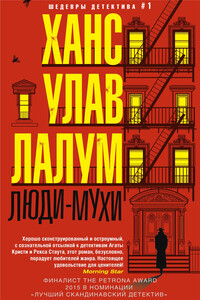
Убит бывший лидер норвежского Сопротивления и бывший член кабинета министров Харальд Олесен. Его тело обнаружено в запертой квартире, следов взлома нет, орудие убийства отсутствует. На звук выстрела к двери Олесена сбежались все соседи, но никого не увидели. Инспектор уголовного розыска Колбьёрн Кристиансен считает, что убийство, скорее всего, совершил кто-то из них. Более того, он полагает, что их показания лживы.
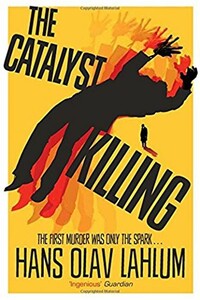
The third mystery in the hugely compelling, bestselling international crime series from Norway's answer to Agatha Christie, Hans Olav Lahlum, The Catalyst Killing will have you guessing to the final clue. The first murder was only the spark… 1970: Inspector Kolbjorn Kristiansen, known as K2, witnesses a young woman desperately trying to board a train only to have the doors close before her face. The next time he sees her, she is dead… As K2 investigates, with the help of his precocious young assistant Patricia, he discovers that the story behind Marie Morgenstierne's murder really began two years ago, when a group of politically active young people set out on a walking tour in the mountains.
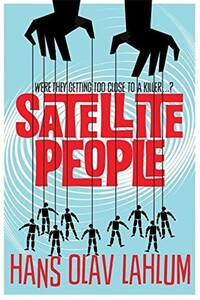
A gripping, evocative, and ingenious mystery which pays homage to Agatha Christie, Satellite People is the second Norwegian mystery in Hans Olav Lahlum's series. Oslo, 1969: When a wealthy man collapses and dies during a dinner party, Norwegian Police Inspector Kolbjorn Kristiansen, known as K2, is left shaken. For the victim, Magdalon Schelderup, a multimillionaire businessman and former resistance fighter, had contacted him only the day before, fearing for his life. It soon becomes clear that every one of Schelderup's 10 dinner guests is a suspect in the case.
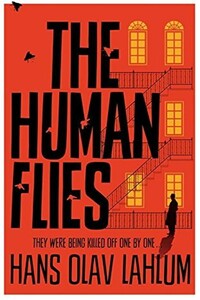
Oslo, 1968: ambitious young detective Inspector Kolbjorn Kristiansen is called to an apartment block, where a man has been found murdered. The victim, Harald Olesen, was a legendary hero of the Resistance during the Nazi occupation, and at first it is difficult to imagine who could have wanted him dead. But as Detective Inspector Kolbjorn Kristiansen (known as K2) begins to investigate, it seems clear that the murderer could only be one of Olesen's fellow tenants in the building. Soon, with the help of Patricia – a brilliant young woman confined to a wheelchair following a terrible accident – K2 will begin to untangle the web of lies surrounding Olesen's neighbors; each of whom, it seems, had their own reasons for wanting Olesen dead.
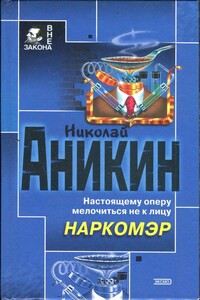
Тупик. Стена. Старый кирпич, обрывки паутины. А присмотреться — вроде следы вокруг. Может, отхожее место здесь, в глухом углу? Так нет, все чисто. Кто же сюда наведывается и зачем? И что охраняет тут охрана? Да вот эту стену и охраняет. Она, как выяснилось, с секретом: время от времени отъезжает в сторону. За ней цех. А в цеху производят под видом лекарства дурь. Полковник Кожемякин все это выведал. Но надо проникнуть внутрь и схватить за руку отравителей, наживающихся на здоровье собственного народа. А это будет потруднее…
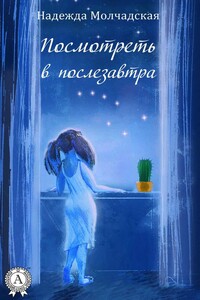
«Посмотреть в послезавтра» – остросюжетный роман-триллер Надежды Молчадской, главная изюминка которого – атмосфера таинственности и нарастающая интрига.Девушка по имени Венера впадает в кому при загадочных обстоятельствах. Спецслужбы переправляют ее из закрытого городка Нигдельск в Москву в спецклинику, где известный ученый пытается понять, что явилось причиной ее состояния. Его исследования приводят к неожиданным результатам: он обнаруживает, что их связывает тайна из его прошлого.
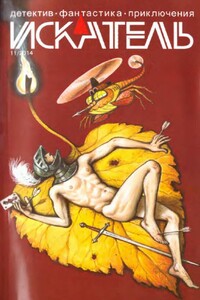
«ИСКАТЕЛЬ» — советский и российский литературный альманах. Издаётся с 1961 года. Публикует фантастические, приключенческие, детективные, военно-патриотические произведения, научно-популярные очерки и статьи. В 1961–1996 годах — литературное приложение к журналу «Вокруг света», с 1996 года — независимое издание.В 1961–1996 годах выходил шесть раз в год, в 1997–2002 годах — ежемесячно; с 2003 года выходит непериодически.Содержание:Анатолий Королев ПОЛИЦЕЙСКИЙ (повесть)Олег Быстров УКРАДИ МОЮ ЖИЗНЬ (окончание) (повесть)Владимир Лебедев ГОСТИ ИЗ НИОТКУДА.
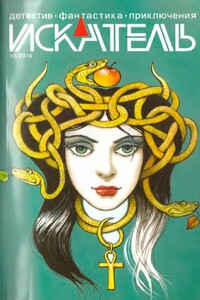
«ИСКАТЕЛЬ» — советский и российский литературный альманах. Издается с 1961 года. Публикует фантастические, приключенческие, детективные, военно-патриотические произведения, научно-популярные очерки и статьи. В 1961–1996 годах — литературное приложение к журналу «Вокруг света», с 1996 года — независимое издание.В 1961–1996 годах выходил шесть раз в год, в 1997–2002 годах — ежемесячно; с 2003 года выходит непериодически.Содержание:Олег Быстров УКРАДИ МОЮ ЖИЗНЬ (повесть);Петр Любестовский КЛЕТКА ДЛЯ НУТРИИ (повесть)
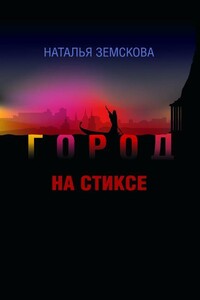
Наталья Земскова — журналист, театральный критик. В 2010 г. в издательстве «Астрель» (Санкт-Петербург) вышел её роман «Детородный возраст», который выдержал несколько переизданий. Остросюжетный роман «Город на Стиксе» — вторая книга писательницы. Молодая героиня, мечтает выйти замуж и уехать из забитого новостройками областного центра. Но вот у неё на глазах оживают тайны и легенды большого губернского города в центре России, судьбы талантливых людей, живущих рядом с нею. Роман «Город на Стиксе» — о выборе художника — провинция или столица? О том, чем рано или поздно приходится расплачиваться современному человеку, не верящему ни в Бога, ни в черта, а только в свой дар — за каждый неверный шаг.
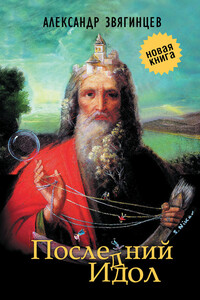
В сборник «Последний идол» вошли произведения Александра Звягинцева разных лет и разных жанров. Они объединены общей темой исторической памяти и личной ответственности человека в схватке со злом, которое порой предстает в самых неожиданных обличиях. Публикуются рассказы из циклов о делах следователей Багринцева и Северина, прокуроров Ольгина и Шип — уже известных читателям по сборнику Звягинцева «Кто-то из вас должен умереть!» (2012). Впервые увидит свет пьеса «Последний идол», а также цикл очерков писателя о событиях вокруг значительных фигур общественной и политической жизни России XIX–XX веков — от Петра Столыпина до Солженицына, от Александра Керенского до Льва Шейнина.